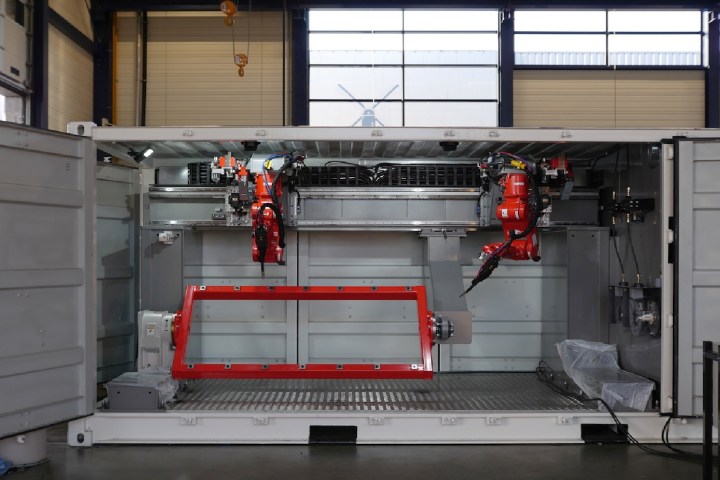
Autodesk might have made its name with its AutoCAD computer-aided design software, but its latest high-tech project is far more focused on hardware. The company has teamed up with Netherlands-based company Dura Vermeer to create a robot-filled shipping container which may very well represent the future of construction work. It is being shown off at this week’s Autodesk University Las Vegas, a massive conference connecting people from industries like manufacturing and architecture, which kicked off on Monday, November 12.
Described by Autodesk as a “large-scale additive manufacturing toolbox,” the new shipping container contains twin Panasonic TS-950 robots, ready to be deployed on construction sites. It is designed to be carried on the back of a truck. These robots can be deployed for 3D printing large, strong, durable metal components for construction. As a result, the hope is that building sites will have to transport fewer components, since they can instead print them as and when required. This also opens up new design possibilities due to the fact that generative algorithms can be used to create components to the exact technical specifications required. Think of it as a supply chain in a box, and you won’t be far off the mark!

“As we rethink the way we build things, it’s not just optimization, but imagination, that will get us ahead,” Autodesk noted in a blog post about the new technology. “For the construction industry, imagine what you could do with the ability to make large parts out of steel or other metals right on the spot. What could you do with this technology if it could be available anywhere in the world — even right there on a construction site? We asked this question of our customers, then we went to work making it a reality.”
The company points to the fact that a combination of growing global population, increased climate change, dwindling natural resources, and a skilled labor shortage will make it difficult to meet the current demand of building 13,000 new buildings every year through 2050. As a result, technologies such as this (and other similar projects, such as attempts to 3D print houses) will become increasingly important.
There’s no shipping date announced so far but, hopefully, it won’t be long before similar technology moves beyond the prototype phase and into the real world.


